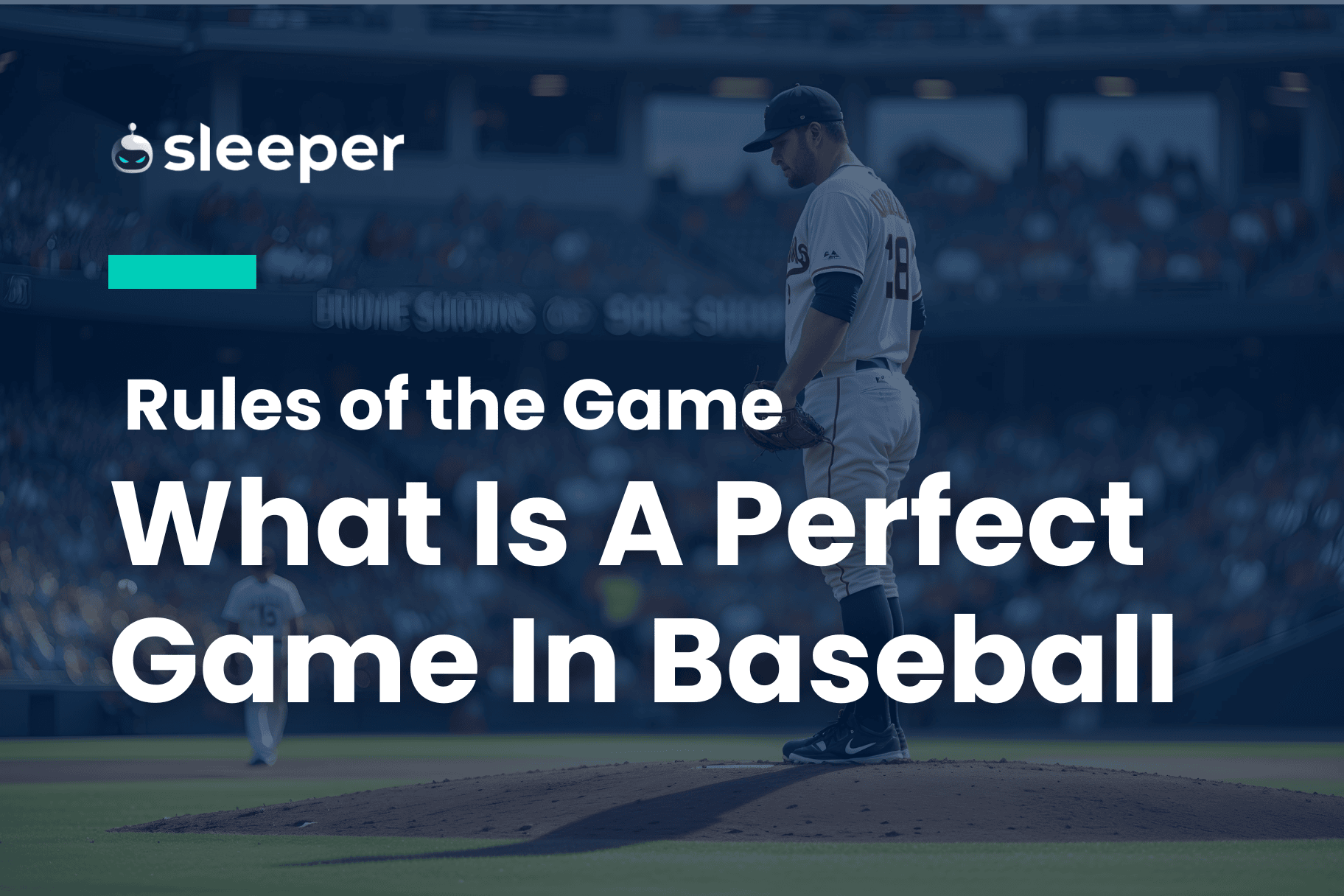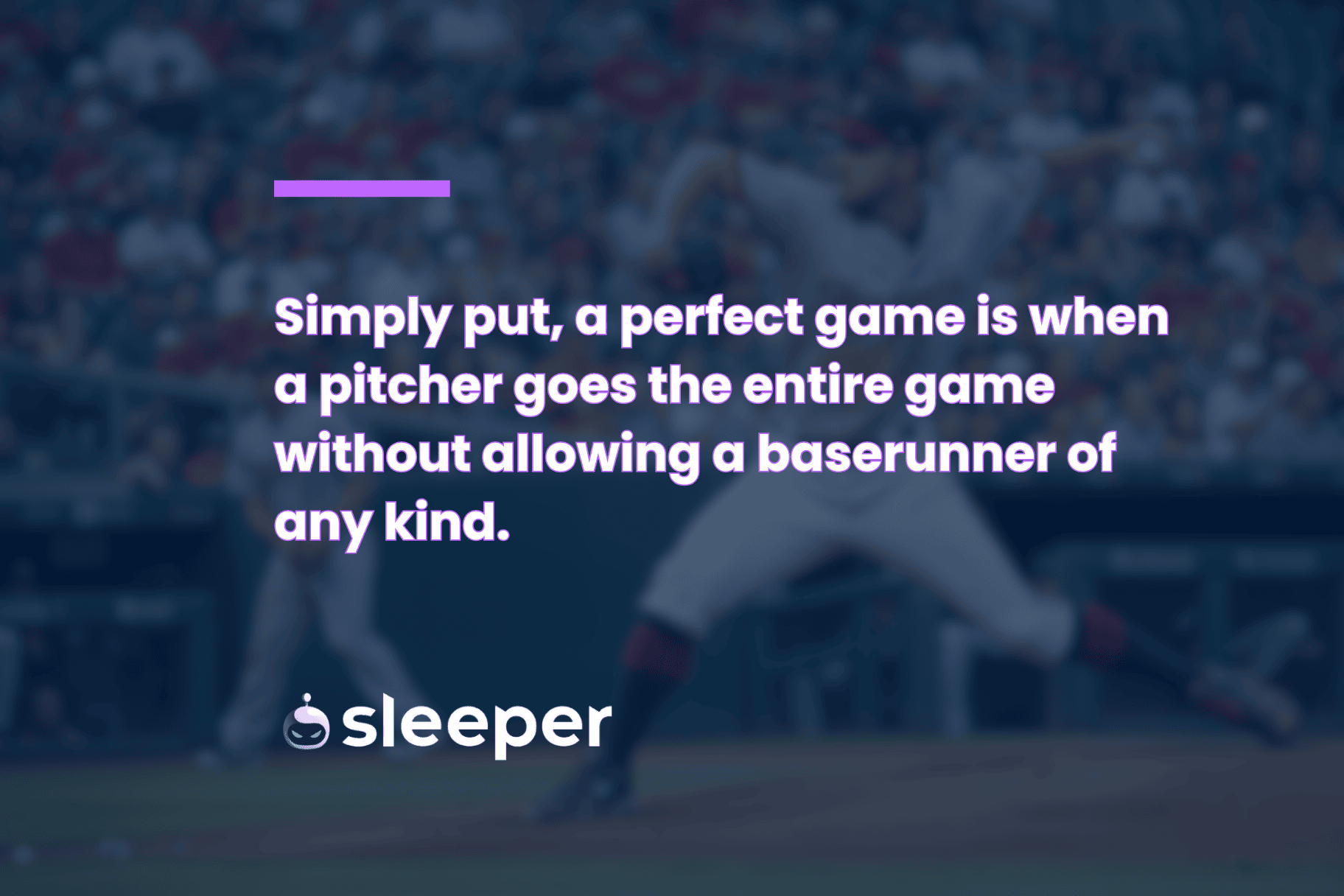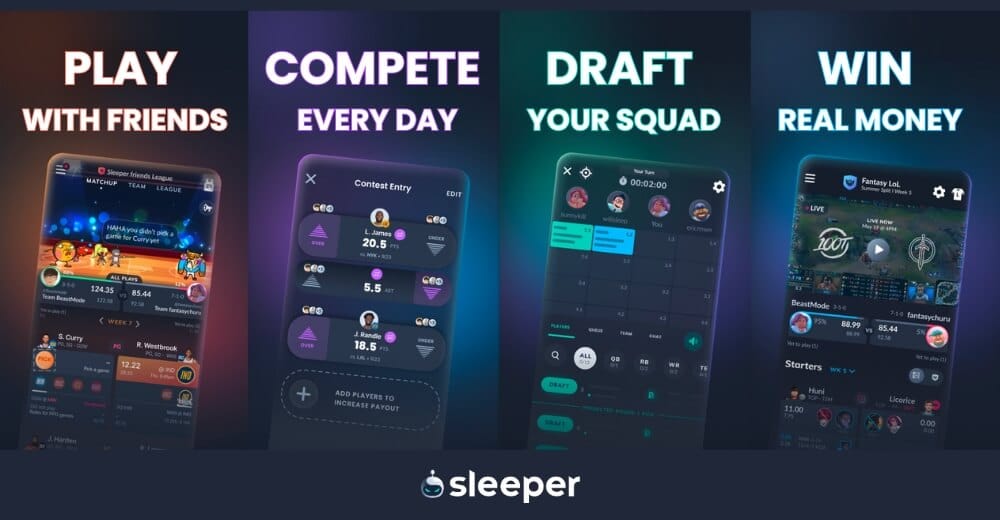Even rarer than the fabled Honus Wagner “Flying Dutchman” card, perfect games in Major League Baseball make blue moons seem like common phenomena.

Perfect games are exceptionally rare in Major League Baseball. Not quite “Halley’s Comet” rare, which comes along once every 80 or so years. Definitely rarer than a blue moon, though, which happens once every 33 months.
In more than a century and a half of recorded MLB history, there have only been two dozen perfect games, for an average of one every six and a half years. Occasionally, entire decades will pass without one happening.
So what is a perfect game, who has thrown them and why are they so uncommon?
How does one get credited with a perfect game?
Simply put, a perfect game is when a pitcher goes the entire game without allowing a baserunner of any kind.
Technically, it doesn’t have to be the same pitcher for the entire game. It could be a team perfect game in which multiple pitchers make history, as there have been more than a dozen team no-hitters. Thus far, however, every perfect game has been completed by a single pitcher.
Let’s explain the difference between no-hitters and perfect games. In a no-hitter, you can allow walks. A.J. Burnett once walked nine batters in a no-no, and Jim Maloney issued 10 free passes in his no-hitter in 1965. You can hit batters. Fielders can commit errors. You can even allow runs. In fact, there have been more no-hitters with at least one run allowed (25) than there have been perfect games (24). Heck, there even have been instances where a no-hitter came in a losing effort.
You just cannot allow any hits, hence the name. And in MLB history, there have been well over 300 documented no-hitters, for an average of around two per season. To qualify as a perfect game, though, no one from the opposing team can reach base under any circumstance.

What Are the Odds, Though?
With 24 perfect games and just a shade under 240,000 games played in MLB history, the ‘practiced’ odds of witnessing a perfect game are roughly 1-in-10,000. But the mathematical odds are considerably longer than that.
From 2014-23, there were 1,723,561 plate appearances in MLB. Hits were recorded on 385,686 of those PAs. There were also 143,139 walks and 17,665 batters hit for a combined total of 546,500 times the pitcher allowed the batter to reach first base.
There were also 25,850 errors committed during that decade. That doesn’t necessarily mean there were 25,850 times that a batter reached base because of an error. Those could have been throwing errors on stolen base attempts or instances where an outfielder launched one nowhere close to his target at third base and allowed a run to score. For argument’s sake, though, let’s say 20,000 (around 77%) of those errors were the type that allowed the batter to reach safely, bringing the previous total from 546,500 up to 566,500.
Divide that number into the total plate appearances listed above and there’s a 32.9% chance that any given plate appearance is going to result in a baserunner (or a home run).
View that in the opposite light, and there’s a 67.1% chance that the batter will be retired.
That sounds promising…until you remember it has to be done 27 times in a row for a perfecto.
Raise 0.672 to the 27th power, divide 1 by that ridiculously small number and you find that the theoretical odds of a perfect game are over 1-in-47,000.
Considering there are two teams pitching in each game, that means one of the teams should pitch a perfect game once for roughly every 23,500 games played, or once every 9.7 seasons in the current state of 2,430 games played per year.
In other words, it’s kind of amazing that there have been 24 perfect games, because there theoretically only should have been 10 or 11.
How Many Perfect Games Have There Been in MLB History, and Who Pitched Them?
Here are the 24 pitchers to achieve the feat of a perfect game, listed in chronological order:
- Lee Richmond, Worcester Worcesters (June 12, 1880)
- John Montgomery Ward, Providence Grays (June 17, 1880)
- Cy Young, Boston Americans (May 5, 1904)
- Addie Joss, Cleveland Naps (October 2, 1908)
- Charlie Robertson, Chicago White Sox (April 30, 1922)
- Don Larsen, New York Yankees (October 8, 1956 - Game 5 of the World Series)
- Jim Bunning, Philadelphia Phillies (June 21, 1964)
- Sandy Koufax, Los Angeles Dodgers (September 9, 1965)
- Catfish Hunter, Oakland Athletics (May 8, 1968)
- Len Barker, Cleveland Indians (May 15, 1981)
- Mike Witt, California Angels (September 30, 1984)
- Tom Browning, Cincinnati Reds (September 16, 1988)
- Dennis Martínez, Montreal Expos (July 28, 1991)
- Kenny Rogers, Texas Rangers (July 28, 1994)
- David Wells, New York Yankees (May 17, 1998)
- David Cone, New York Yankees (July 18, 1999)
- Randy Johnson, Arizona Diamondbacks (May 18, 2004)
- Mark Buehrle, Chicago White Sox (July 23, 2009)
- Dallas Braden, Oakland Athletics (May 9, 2010)
- Roy Halladay, Philadelphia Phillies (May 29, 2010)
- Philip Humber, Chicago White Sox (April 21, 2012)
- Matt Cain, San Francisco Giants (June 13, 2012)
- Félix Hernández, Seattle Mariners (August 15, 2012)
- Domingo Germán, New York Yankees (June 28, 2023)
Quite the interesting blend of all-time greats and “Who’s that now? 🤨” type of names on that list.
There’s no Nolan Ryan, Greg Maddux, Bob Gibson, Pedro Martinez, Walter Johnson or Roger Clemens to be found, but Cy Young, Addie Joss, Jim Bunning, Sandy Koufax, Catfish Hunter, Randy Johnson and Roy Halladay are all in the National Baseball Hall of Fame.
Of those seven HOFers, the best footnote on the perfect game belongs to Hunter, who also went 3-for-4 at the plate, driving in three of his team’s four runs while retiring 27 consecutive hitters — maybe the greatest “put the team on my back” performance in baseball history.
That leaves 17 non-HOFers who hurled perfect games, several of which no one could have possibly seen coming.
Robertson’s perfecto came in just the third start of his MLB career, and was the only perfect game recorded in a span of more than 48 years. He, Barker, and German all had career ERAs north of 4.30.
Hands down, though, the biggest “WTF?” perfect game belongs to Philip Humber. He not only finished his career with a 5.31 ERA in 97 games pitched, but he finished that 2012 season with an ERA of 6.44.
Immediately after his historic performance, Humber allowed at least eight earned runs in two of his next three turns through the rotation and had pitched his way out of a starting job less than three months later.
Perfect Games and Fantasy Baseball
Considering fantasy sports is our thing, we should probably discuss the impact a perfect game can have on the fantasy side of things.
Godspeed trying to forecast when a perfect game is going to happen, but it sure is a game-changer if you happen to be so lucky as to have one in your fantasy lineup at some point.
How much it’s worth, exactly, depends on what type of scoring system you’re playing in. If it’s a points league or Daily Fantasy Sports, get ready to rack ‘em up. With points rewarded for every out recorded and no hits, walks or runs allowed for point deductions, a perfect game is like printing money — especially if it’s a perfect game with quite a few strikeouts.
Exact scoring varies by site, but having a pitcher toss a perfect game with 8-10 strikeouts is going to net you around the same number of points as having a batter hit three grand slams in a single game.
If we’re talking a head-to-head categories league, a perfect game is going to have a massive positive impact on your ERA and WHIP. If you otherwise have 60 innings pitched for the week with a 3.75 ERA and a 1.20 WHIP, a perfect game will get you down to a 3.26 ERA and a 1.04 WHIP, which is a substantial difference — not to mention the benefit provided in the form of strikeouts and wins/quality starts.
In a roto league, you’re not going to feel much of an impact from one perfect game, especially if it’s later in the season and nine innings is either just barely or not even 1% of your total innings pitched for the season. Every inning counts, though.
Frequently Asked Questions
When was the last perfect game?
Domingo Germán had a perfect game for the New York Yankees on June 28, 2023. That broke a drought of more than a decade dating back to the 2012 season, in which there were three perfect games. 2012 was the third season in MLB history with multiple perfect games, but the only one with at least three.
Has anyone pitched more than one perfect game?
Negative. The Yankees lead the way with four perfect games, including Don Larsen’s historic performance in the 1956 World Series. The Chicago White Sox have had three in franchise history. But no individual pitcher has tossed multiple perfectos.
Who has been on the wrong end of the most perfect games?
There have only been 10 perfect games since the Tampa Bay (Devil) Rays became a franchise in 1998, but they were the team that couldn’t get on base in 2009 against Mark Buehrle, in 2010 against Dallas Braden and in 2012 against Félix Hernández. In that span of just a little over three calendar years, they tied the Brooklyn/Los Angeles Dodgers for most perfect games allowed.
What was the most painful almost perfect game in MLB history?
There are three viable options here.
The most recent was Armando Galarraga, who on June 2, 2010, was robbed of a perfect game on a terrible call by first base umpire Jim Joyce on what should have been the 27th and final out of perfection.
There was also the time on June 3, 1995, when Pedro Martínez pitched nine perfect innings but received zero run support until the game went to extra innings. The Expos did finally score one run in the top of the 10th inning, but Martínez allowed a double to the first batter he faced in the bottom half of the frame.
The correct answer, however, is Harvey Haddix. On May 26, 1959, Haddix pitched 12 perfect innings while his Pittsburgh Pirates racked up 12 hits but zero runs. In the bottom of the 13th inning, the perfect game was broken up by a fielding error. Pittsburgh subsequently lost 1-0, despite maybe the greatest individual pitching performance of all-time.
In Summation
Fun fact: The rarest feat in a baseball game isn’t actually a perfect game.
Four home runs by one player in a single game has only been done 18 times. A total of 15 unassisted triple plays have been turned. There have been just six 20-strikeout games in MLB history. And Fernando Tatis remains the only player to ever hit two grand slams in a single inning.
Going to the ballpark and seeing a perfect game is the ultimate sports-viewing dream, though.
You notice it’s a possibility after three innings. By the end of six innings of perfection, you can cut the tension in the ballpark with a knife. And then those final nine outs feel like the inside of a pressure cooker. At a certain point, even fans of the team repeatedly failing to reach base start to hope they’re about to witness history.
Winning a fantasy league or DFS contest may not yield quite the same elation as that of hurling a perfect game, but it’s still an incredible feeling to do so. If you haven’t already, give Sleeper a try to achieve just that by downloading the app or signing up via the website. The app provides a top-notch user experience, and its fantasy offerings are plentiful, from the Sleeper Picks DFS game to news and alerts about all things fantasy baseball.




